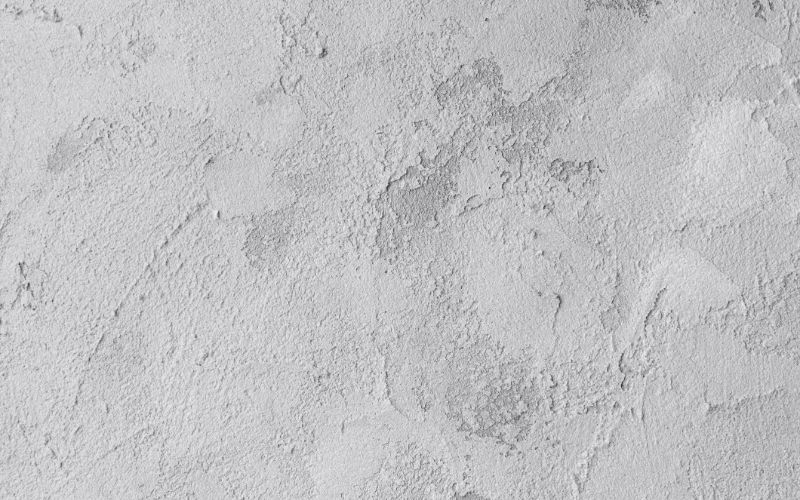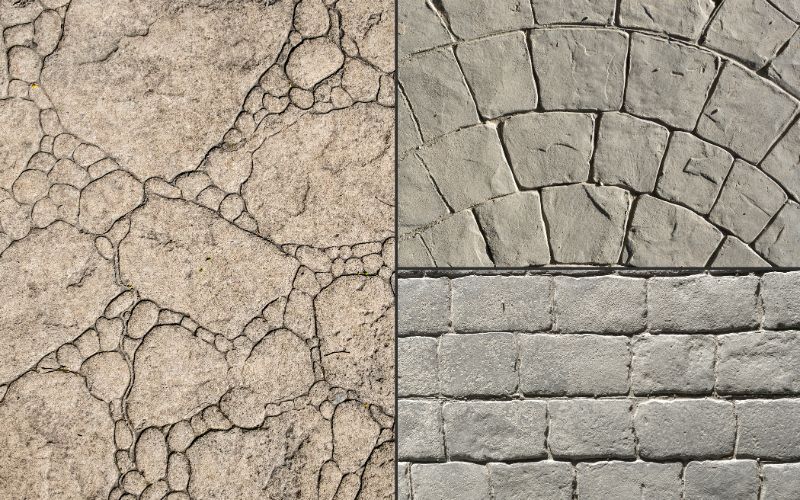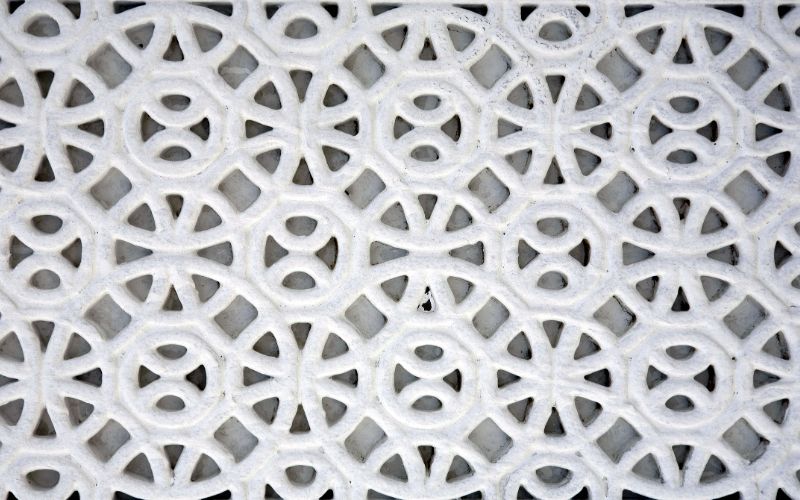With an increased need for affordable, durable materials that can be applied in a large range of contexts, concrete has been adapted with the intent of making it easier to use. This has made it more versatile and its uses more diversified with aesthetic customisations. With all of these varying innovations it is no surprise then that this material has increasingly been used for new and more contemporary designs.
Where concrete was once considered to be a material exclusively used for the construction of harsh and utilitarian buildings in city centres, its reputation has now shifted. Concrete is no longer solely used for building walls, it is also used in landscaping, sculpture, contemporary architecture and public space development. Decorative features, and even in domestic settings for furniture, light fixtures, countertops, sinks, tiles, wall panels.
Even beyond that, concrete is being applied to environments one might never expect. Although these unusual and eclectic applications are increasingly popular, one must remember that this accessible material is still just as useful when it comes to the development of simple sidewalks, parking lots and urban landscapes.
Innovations In Concrete Production
Concrete has had its so-called ‘glow-up’ thanks to a few keen minds who were willing to experiment with its composition, chemical agents and durability. For example, high-tech and smart infrastructure industry players have developed new varieties of the material, altering it so that it can better withstand differing conditions.
Self-Healing Concrete
Self-healing concrete was recently developed with an aim to prevent cracking, wear and tear. This kind of concrete variety involves a bacteria that is able to assist with the immediate repair or any cracks that may occur as a result of force or friction.
Self-healing concrete is now being tested and poured with the help of concrete mixers in a range of contexts, and is foreseeably a major investment for roads, bridges and other buildings where scheduled maintenance may be impractical. Introducing concrete varieties like this can have major implications and can prove especially useful in reducing the cost of infrastructural maintenance for large, immovable assets, state facilities and public structures.
New Ingredients
Similarly, certain civil engineers have used concrete mixers to combine classic cement aggregates with carbon fibre or graphene. In doing so, they are essentially able to conduct electricity that generates heat. This has big ripple effects for construction companies that may be building in colder climates. Colder areas face a constant obstacle where the presence of snow or ice threatens a site’s infrastructural integrity, safety and sustainability.
However, with the introduction of ‘conductive concrete’, sidewalks, roadways and airports can now be made that much safer. Throughout regions in the Northern Hemisphere, conductive concrete can be a saving grace that ensures that certain areas are no longer deemed unwalkable or unsafe due to ice buildup.
Sustainability And Environmentally Conscious Concrete
Sustainable and Environmental concrete is now also becoming increasingly popular. With adaptations that can assist in reducing carbon footprints and regulating temperature. For example, carbon-sequestering concrete is a type of material that is able to absorb and store carbon dioxide, thereby cleaning the surrounding air and, to some extent, mimicking the functionality of trees.
Green buildings like this are impressive solutions to prevent global-warming. These buildings offer a practical and eco-sensitive response to the call for more environmentally-friendly urbanisation schemes. On a similar note, concrete that is more permeable and absorbent is now being used in tandem with carbon-sequestering concrete, complementing it with its own eco-conscious benefits.
So-called permeable concrete has been proven to prevent flooding and water run-off (a common side effect of the removal of wetlands and forests), allowing for rainwater to seep into the ground and ultimately recharge groundwater reserves.
As time progresses, it is expected that these unique variations will become more commercially viable and accessible, making it easier to use them on wider scales, and even on tighter budgets. The popularisation of such materials can dramatically impact development trends, shaping how buildings are put up throughout the city as well as in residential, commercial and industrial areas. And with the help of quality concrete mixers and high grade materials, high quality builds are possible.
When manufacturers use concrete mixers to produce concrete that is not only durable but also environmentally friendly, able to regulate temperature and low-maintenance, then harmful issues like urban decay, costly maintenance expenditure and the erosion of public facilities may be reduced. Similarly, humans in these areas can expect to enjoy their spaces more, feel more at home, and enjoy less polluted areas where functionality and form are harmonious.

Aesthetic Customisations And Finishes For Concrete
Speaking of form and function, while the practical improvements in concrete have been exceptionally important for both the industry and the consumers there is another very important factor to keep in mind when designing; this is the importance of aesthetics and finishing touches.
With concrete mixers being employed to mix more concrete, for more sites, designers have been compelled to consider how this material can be finished in more unique ways to adequately reflect the environment in which it is applied. Concrete is visible not only in industrial cityscapes but also in artistic and cultural centres such as galleries, domestic settings, the everyday suburban home, outdoor sanctuaries and sculpture gardens. In these kinds of varied settings, aesthetics is often as important as practicality.
While historically in cities, concrete has generally not been expected to hold any particular visual standards, modern designers and developers have felt enticed to improve the aesthetics of the material not only to make it more applicable in different contexts but also to improve its visual appeal. Simple grey, washed facades can be boring to the eye and difficult to discern between. However, when concrete mixers are used to pour concrete that is then customised, finished, stained and embellished, the appeal increases.
Even beyond cities, the importance of visual appeal has always been a primary concern when it comes to architectural design and development. Even if it is just inside one’s home, the pouring of concrete floors can indeed be made beautiful with the help of stains, glossy finishes and other details. Just because concrete has technically been popularised for its functionality more than anything, that does not mean that something cannot be done to make it more appealing and novel.
Fortunately, more and more people are catching on to this fact and have begun to use concrete in more decorative and artistic ways, finding new ways to make it their own and bring coherence into the situated context. What’s more, they are embedding themselves further into the design process in order to create unique finishes from as early as when the concrete is being poured straight from the concrete mixers.

Artistic Finishes for Concrete
After pouring your concrete from your concrete mixers, there are a few different approaches to finishes. First, one can look into customisations at the end of the project, such as textured finishes and pigmentations. Textured finishes offer a multi-sensory purpose and effect, allowing the viewer to not only see the difference but also feel it.
In spaces that are bare and in need of new depth and dimension, textured finishes can be a great addition. This is particularly popular in more modern spaces, where texture is used as a device that can introduce visual interest without cluttering the space with art or furniture. This is also very useful if you want to develop a space with a particular time or era in mind.
For example, if you were developing a space which you’d like to be reminiscent of the 80s, perhaps you’d opt for the Popcorn finish that creates small bubbles on the surface, which is often associated with that era. Alternatively, if you’d like to appear more modern, you might prefer a smooth, glossy finish that would work hand in hand with minimalist interior design.
Pigmentation, however, is very useful if you want to add pops of colour or translate a new sense of vibrancy into the space. Pigments or stains are used to change the colour and tone of cement, without the need to paint over it. As paint often requires maintenance and can chip regularly, pigmentation offers a far better alternative for a long-lasting effect.
What’s more, it is also useful in that it still allows the texture of the cement to shine through, if desired — this introduces a new layer of intrigue that will certainly make for a compelling venue. However, should you prefer an opaque look, you have the option of layering on the stain, as it has quite a buildable formula that allows for varying degrees of opacity. Pigments and stains are well-loved by many interior designers because they also allow you to make the interior look’s palette more cohesive with the build infrastructure itself.
For those who are more inclined to go for a more dramatic, embellished finish that will give the feel of a Renaissance-era building, you also have the option of using concrete stamps. Stamped concrete is produced by placing a designed mould or patterned stamp onto the wet concrete surface, thereby creating a pleasant and unique surface. Because this process involves incorporating the design onto the wet concrete surface, you will likely have to liaise with those handling the concrete mixers, then pour and apply it to the given surface.
Alternatively, you can buy ready-made stamped concrete, but this will often limit the number of design options you have. While some use stamps to incorporate eccentric patterns to cement’s exterior, others prefer to use stamps that can mimic alternative materials such as brick, stone or wood.
Finally, another popular finishing option for those who’d like to refine the final look following the pouring of cement from your concrete mixers, is in the finishing polish. Consumers and designers have the option of making a matt or glossy finish. While glossy finishes are more popular in domestic settings, such as in kitchens, living rooms or bathrooms, matt finishes are praised for their soft finish and understated ease.
Depending on which option you choose, you will find that it may take your space from industrial and minimalist to sleek and modern. Whatever option you pick, just know that you are in full control of your customisations, and you ultimately get to decide how you want your space to look.

Concrete Mixers: Customise Your Cement
Now that you know what the varying options are for your interiors or developments, we encourage you to plan out your designs and projects with these customisations in mind. When working with concrete mixers and pouring cement, you are not limited to singular finishes or monotonous grey colour schemes. Instead, you have all the freedom to decipher not only how your space will look, but also which type of newly-innovated cement material will work best in your environment.
So, visit our website today to learn about the concrete mixers we have and how they can contribute to your next aesthetic project.






